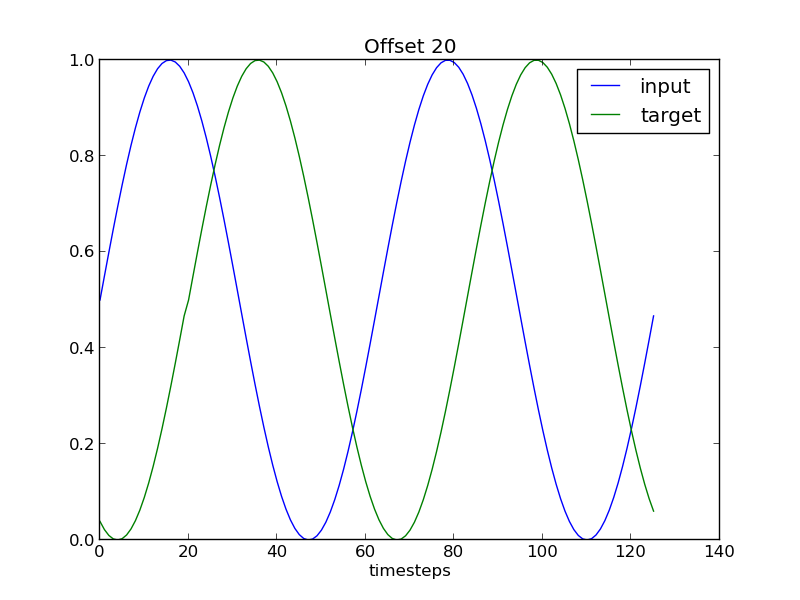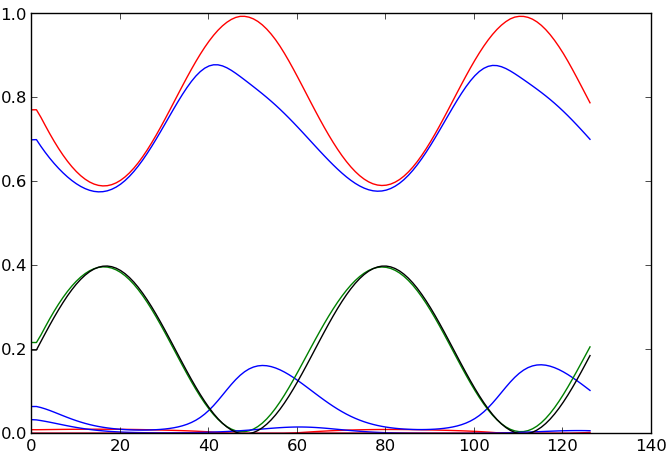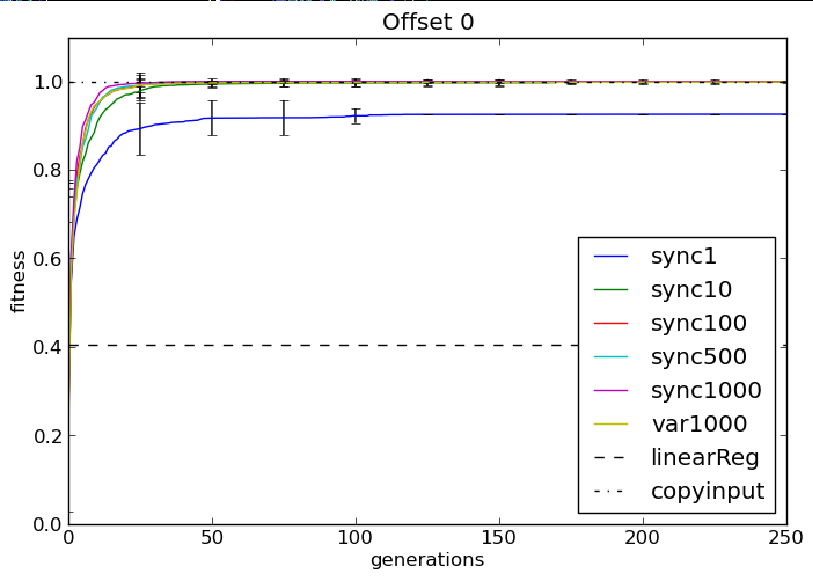An Examination of Synchronisation in Artificial Gene Regulatory Networks
Jonathan Byrne, Miguel Nicolau, Anthony Brabazon and Michael O'Neill
Natural Computing Research and Applications Group
University College Dublin
Ireland
Overview
- The gene regulatory network (GRN) model
- Synchronisation step
- Pole balancing experiment
- Offset experiments
- Conclusions
Gene Regulatory Network
- Gene expression generates proteins
- Proteins enhance or inhibit gene expression
- DNA segments indirectly interact through protein production
Banzhaf GRN model
- Evolutionary: Evolved bitstring model
- Developmental: Fully connected Network
Evo Representation
- Defines network structure
- Promoter defines number of nodes
- Gene sequence defines the weights
Evo Representation

Devo Representation
- Fully connected network topology
- Node interactions defined by weights
- Node concentrations change over time
Devo Representation

GRN Input and Output
- "Extra" genes used for input
- "P" genes used for output
- Extra concentration set by input value
- Extra limited to a maximum of 0.4
- Extra and TF genes normalised together
- P genes normalised separately
GRN Input and Output

The Synchronisation Step
- Change in input effects dynamics of the network
- Stabilisation required to react to input
- How does the size of the sync step effect the GRN?
- Is there an automatic approach for choosing the step size?
Pole Balancing Experiment

Pole Balancing Experiment
- Dynamic experiment benchmark
- 120,000 time steps
- Cart re-initialised for every generation
- 4 Extra genes and 2 P genes
Pole Balancing Experiment
- X ∈ [−2.4, 2.4] m is the position of the cart from the centre
- θ ∈ [−12, 12] ◦ is the angle of the pole with the vertical
- x ∈ [−1, 1] m/s is the velocity of the cart on the track
- Θ ∈ [−1.5, 1.5] ◦ /s is the angular velocity of the pole
Pole Balancing Results

Offset Experiments
- Same input with different offsets for target output
- Can it match the target?
- Does increasing the size of the sync step effect performance?
- Does a stabilised network retain information about previous states?
Sine Experiment

Offset 10

Offset 20

Sine Results: Offset 0

Sync step 10 offset 0

Sine Results: Offset 10

Sine Results: Offset 20

Random Walk Experiment

Random Walk Results: Offset 0

Random Walk Results: Offset 10

Random Walk Results: Offset 20

Conclusions
- Synchronisation can improve performance
- Improvement increased logarithmically
- No improvement with greater offsets
- Variable synchronisation performed worse